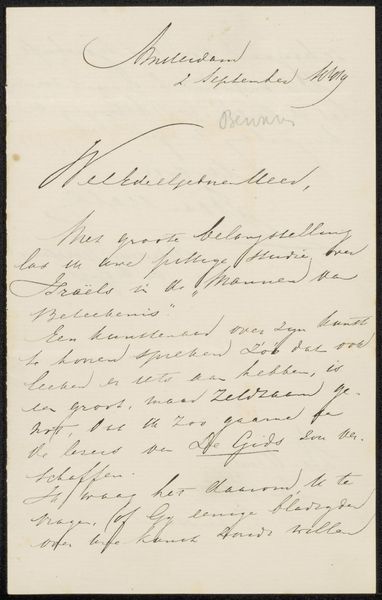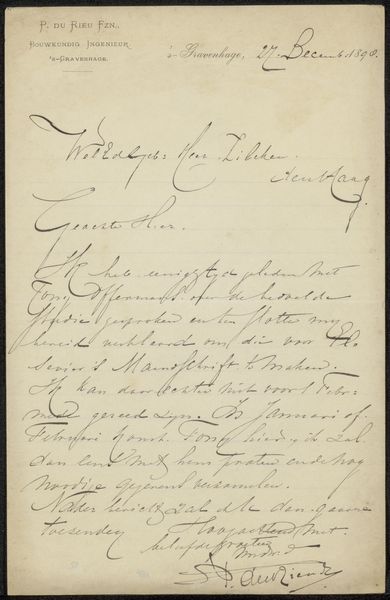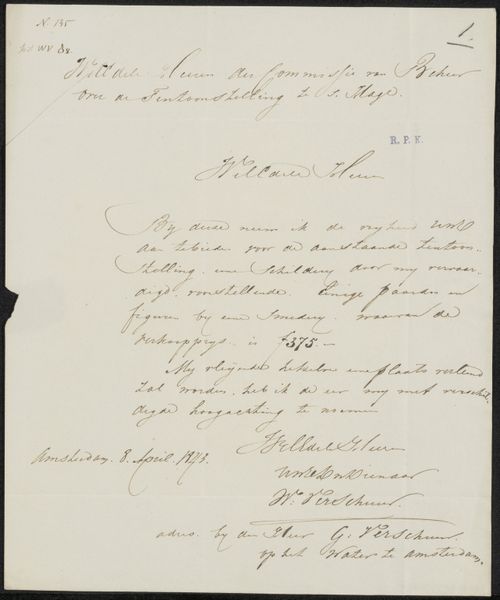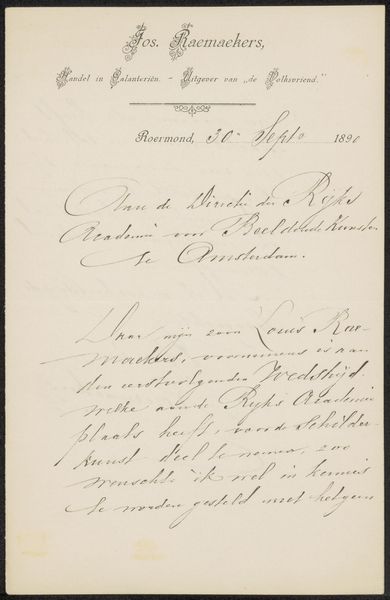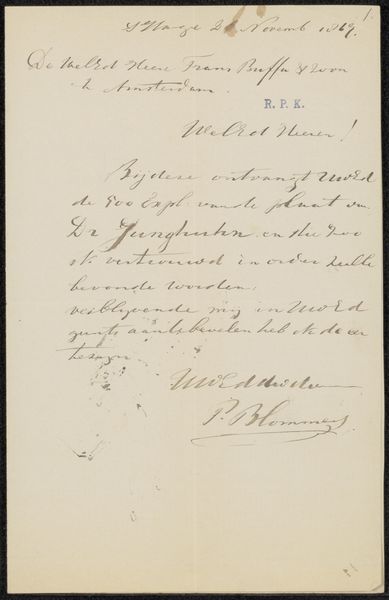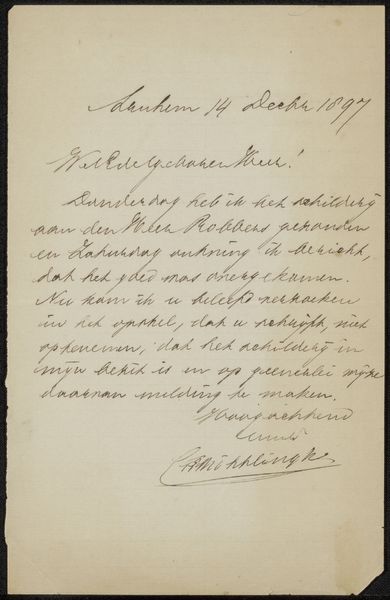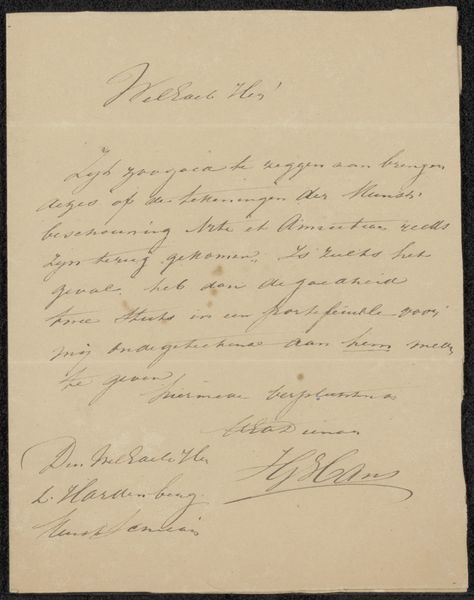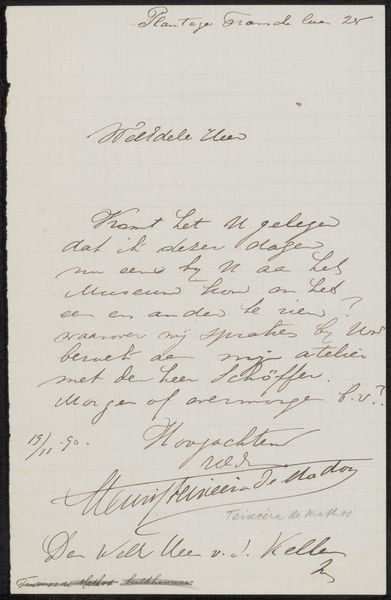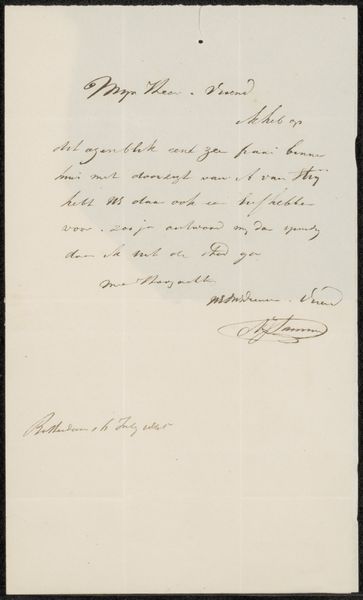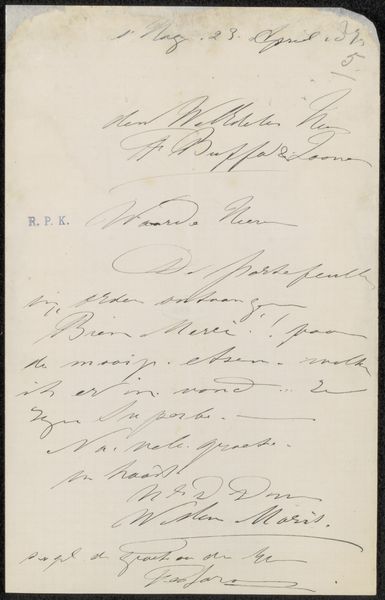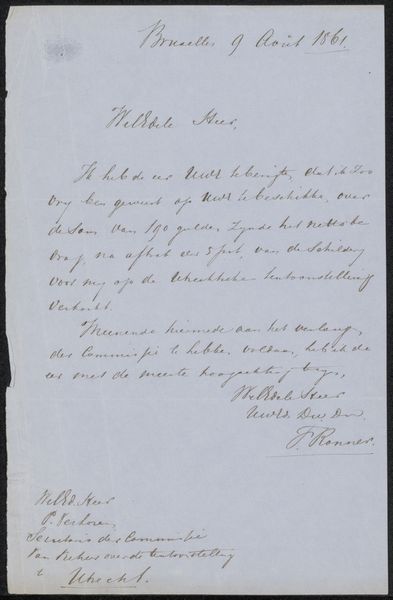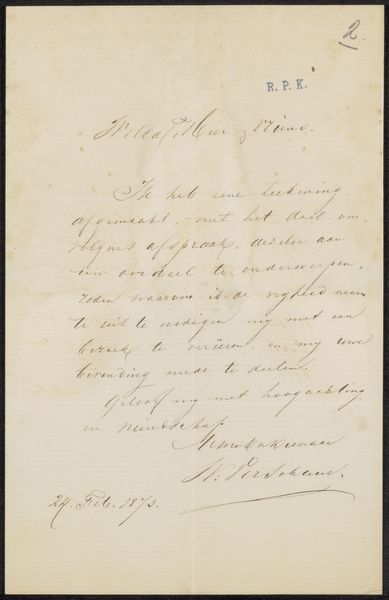
drawing, paper, ink, pen
#
portrait
#
drawing
#
script typography
#
hand-lettering
#
old engraving style
#
hand drawn type
#
hand lettering
#
paper
#
ink
#
hand-drawn typeface
#
pen-ink sketch
#
thick font
#
pen work
#
pen
#
handwritten font
Copyright: Rijks Museum: Open Domain
Curator: I'm drawn to the exquisite details in this work, a pen and ink drawing on paper. Titled "Brief aan Pieter Haverkorn van Rijsewijk" by Albert Neuhuys, possibly created around 1896, it resides here at the Rijksmuseum. Editor: Immediately, I notice how delicate the hand-lettering is. It's quite fascinating actually; the artist really captures a calligraphic mood through line quality and the overall weight of the drawing. Curator: Neuhuys’ art was often centered around intimate portrayals of rural life, reflecting a period of social and political transition in the Netherlands. Understanding his milieu and the recipient of this letter could really unlock nuanced meaning related to artistic exchange or patronage. Editor: You can decode the semiotics within. Notice the consistent stroke that unifies each word, building a structural cohesion within the entire text. Even the white space plays a role, setting apart the various phrases and emphasizing particular intentions in communication. Curator: The very act of handwriting a letter during that period speaks volumes. There's an implicit statement of the relationship between the two, the perceived values around artistic collaboration and their societal positions. What might this collaboration have meant in the Dutch art world? Editor: It evokes a sense of history, but look at the thicks and thins of the handwritten typeface—such distinct weight is given to essential phrases and statements! There are dynamic vectors at play here that move your eye around the letter, almost musically. Curator: I appreciate how that initial response sets the stage for our reading; it’s interesting to position artwork and objects that appear quite quotidian into something significant of their time. That is where this resonates with audiences today—by exploring these historical moments, as they relate to how power and class manifest. Editor: Exactly. Analyzing the lines' flow to the density of text creates an emotive reading in me—the weight of communication visually emphasized in these delicate swirls of pen and ink. Curator: A look into the artistic communities, revealing connections otherwise missed! Thank you for the focus on composition and structure. Editor: Thank you for that context. It underscores the importance of closely investigating artistic intent that builds upon larger philosophical ideas.
Comments
No comments
Be the first to comment and join the conversation on the ultimate creative platform.
